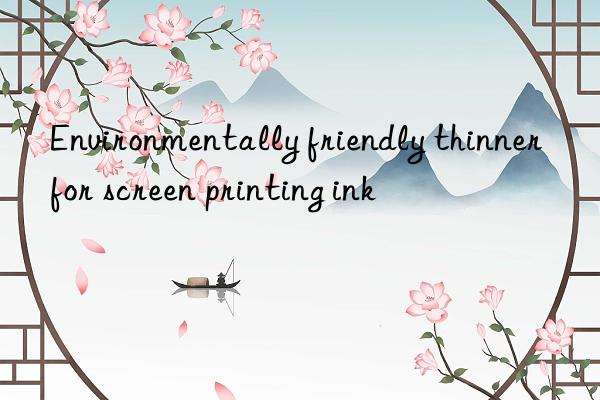
Organic solvents are indispensable chemical products for most industrial enterprises, especially in the screen printing industry. One of the essential materials. Solvents are mainly used in screen printing to adjust the viscosity of the ink, adjust the drying speed of the ink, and are used to clean the screen printing plate and printing squeegee after printing. Commonly used solvents mainly include aliphatic hydrocarbons. The solvents that are well known to merchants who use screen printing consumables are the 783 series, such as 783 oil-opening water, 783 screen washing water, 783 slow-drying water, etc. The meaning of screen printing solvents has become more and more extensive, but the ultimate goal is as long as the oil can be diluted That’s it.
A customer asked whether there are solvents with a boiling point of around 150° that are tasteless and environmentally friendly. Solvent recommendations. It is impossible to say that solvent products have no smell at all like water. We can only say that they have a lighter smell or a slight solvent smell than solvents with a stronger smell. If you have higher requirements on odor, it is recommended to use an odor masking agent. The use of odor masking agent has no effect on the ink, but the amount used still needs to be controlled, and it is not advisable to add too much. In addition, in order to reduce costs, many manufacturers originally added some toluene, xylene, trimethylbenzene, etc. into the boiling water, which made the nature of the boiling water unenvironmental and even affected the quality of the boiling oil. However, strict environmental protection inspections now force many manufacturers to adjust product formulas and switch to environmentally friendly solvents to reduce or remove the proportion of benzene content. As we all know, no solvent can dissolve all organic matter. As the saying goes, everyone has his or her own abilities. Mixed solvents have relatively wide solubility. The oil-opening ability of a single pure type of solvent oil is not ideal. You can consider adding some acetone and cyclohexanone appropriately, and the effect can be improved. few.
During the printing process, if the printed graphics and text appear blurry, In terms of solvent, you can use a slower drying solvent to prepare the ink, thin the ink, reduce the viscosity and pay attention to the ink passing performance of the printing screen. If the network or board is clogged, you can check whether it is caused by the insufficient solubility of the added solvent. If there are obvious water ripples in the printed matter, the ink is too thin or the viscosity is too low. The screen spacing is too low during printing, causing the ink to stick back during printing. At this time, the amount of solvent added to the ink is reduced, the viscosity of the ink is maintained, and the screen spacing is appropriately increased, so that the printing can rebound appropriately. Due to the influence of ink selection, printing plate production, printing substrate characteristics, production process, printing environment, etc. (with many variables), it is easy to cause various printing failures. In the practice of screen printing, specific problems still have to be solved. Specific analysis.



 微信扫一扫打赏
微信扫一扫打赏
